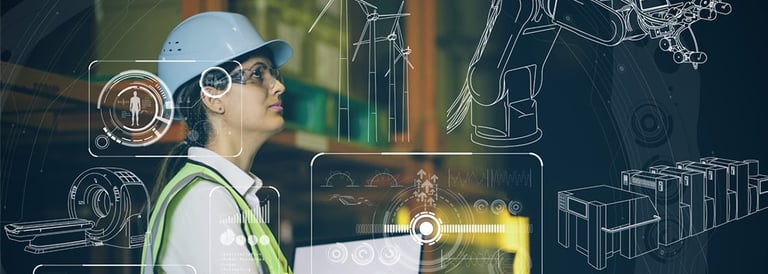Industry 4.0 ready? Don’t forget about your manual sub-flows

Industry 4.0 has been on the agenda for quite some time now, but its realization is a far away from what fills our daily news feeds. When visiting or talking to customers, I get the feeling that many of them still lack the foundation for even starting to talk about Industry 4.0. The problem? They neglect their process’ manual sub-flows.
At a nutraceutical production site, the operator Anna is responsible for the flow of material in process area A. She starts her shift by entering the material room to pick up the bucket labelled ”tablet press A”, then walks the factory to ascends some stairs to reach a point approximately 6 1/2 feet higher up where from she can pour the powder into the funnel on top of the otherwise fully automated tablet press. She removes the lid and empties the bucket. The dust makes her sneeze. Still sneezing she descends the stairs, slips a little, but manages not to fall. At the bottom of the stairs, she presses the start button. Once the tablet press is done, white tablets are ejected from the machine, landing in a container on the floor. Anna seals the container and hands it over to the next step in the process – the fully automated packaging line.
Anna is a fictitious person, but her situation seems to be commonplace in some industries. At Piab, we daily help our customers to convert manual sub flows into automated ones using vacuum-based conveying technology. As for Anna’s situation as described above, both the inflow (the powder) and the outflow (the finished tablets) can be solved using a semi (conventional solution) or a fully automatic vacuum conveying system (controlled by machine learning), where human interaction becomes minimal as the system itself can adapt to the humidity as well as the density of the material etc. By moving from a manual flow to an automated one, the basic prerequisites are being established for generating relevant data and linking up the complete system, leaving no manual “black-box” islands behind. In Anna’s case, it would also lead to less exposure to dust as well as reducing the safety and ergonomic risks attached to her handling the material manually. The result is increased productivity and an improved working environment.
To a great extent, the next few years will be spent transforming manual sub flows into automated ones that generate relevant data and link up to form a unit, focusing on the overall optimization rather than that of each part. Efforts will focus on upgrading semi-automated flows into fully automated solutions based on minimal physical human interaction. Not until that happens will we be able to really talk about Industry 4.0 and about its potential for the processing industry. What it boils down to is understanding and investing in the weakest link – because that is what is stopping your company from reaching the full potential of Industry 4.0.